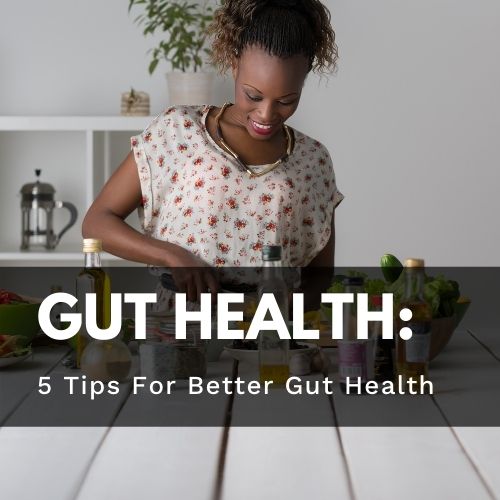Your Cart is Empty
COLLECTIONS:
SPECIAL OFFERS:
LEARN:

How to Read a Nutrition Label
January 25, 2022 6 min read
Written By: Autumn Enloe, MS, RD, LD, CLT
More than ever, people are looking to nutrition labels to verify if a product is healthy for them.
Knowing how to quickly read a label is essential.
It can be easy to get tricked into marketing on the front of a package, so reading the components and ingredients on the back of a label will help you make better-informed decisions.
Knowing how to read a label can especially be helpful if you have any health conditions. It’s also helpful if you’re avoiding certain foods due to food sensitivities or allergies, or if you’re following diets such as Keto or Whole30.
Even if those conditions don’t apply to you, it’s still important to know how to read a nutrition label so you’re able to choose healthy and safe food for you and your family.
Don't fall for the marketing hype that the big food companies use.
This article will teach you how to read a label, the main things to look for, ingredients to avoid, and other things to keep in mind when reviewing the nutrition label.
Nutrition Label Reading 101
You may notice recent nutrition labels appear differently than they have in years past. That’s because the label guidelines change over time, with new changes required by 2021 (1).
In addition, the numbers and percentages on the nutrition label are based on a 2,000 calorie diet; a general recommendation for the public. Thus, the numbers and daily value (DV) percentages on the label may need to be adjusted for your particular needs.

Here are the top things to look at on a nutrition label:
1. Serving Size:
One of the first things to look for on the label is the serving size. You might find there are multiple servings in one package, so keep in mind that the numbers listed (such as calories or carbohydrates) are based on just one serving size.
This is particularly important to know for products where you typically consume the entire product in one sitting (such as a bottled beverage).
2. Total Calories:
This number reflects how many calories are in one serving. If you consume more than one serving (such as two), you would have to double this number.
That 100 calorie snack may actually be 200 calories.
Keep in mind that the quality of the calories matter more than how many calories something is, so don’t base a product entirely on how many calories it contains.
3. Trans Fats:
This type of fat is the most harmful type of fat, and has been shown to increase risk factors for many health conditions, as well as have a negative impact on our brain and nervous system.
Foods with trans fats are some of the most damaging foods.
If you see trans fats listed, or words such as “partially hydrogenated oils” or “hydrogenated oils” on the ingredient list, you should put the product right back on the shelf (2,3).
4. Sodium:
For some individuals (such as those with high blood pressure), sodium amounts are an important component on the nutrition label to look at. Although sodium is an essential nutrient for our health, not everyone responds to it in the same way and can be more sodium-sensitive than others.
Keep in mind that it’s best to consume this nutrient in natural forms; such as from vegetables or meats. Foods such as canned soups, frozen meals, or processed meats contain a high level of sodium to help preserve the product and should be avoided.

5. Total Carbohydrates:
This number includes both fiber and sugar in the total value. This value is important to look for if you are trying to avoid excess sugar intake.
Although many low-carb diets are gaining popularity, keep in mind that not all carbohydrates are bad for us.
It’s more important to focus on complex carbohydrates (e.g. vegetables, fruit, beans, nuts or whole grains) vs. simple carbohydrates (e.g. fruit juices, chips, cereals, or baked goods).
- Fiber: is a nutrient that most people are not consuming enough of. In fact, the average American only consumes about 15 grams of fiber per day, with the recommended value being between 25-30 grams per day. Fiber is especially important for keeping blood sugars balanced, supporting heart health, and promoting healthy bacteria in the gut microbiome (4,5).
- Sugar:There are two components to the sugar section to look at:total sugars and added sugars. Some products naturally have sugar in them such as certain dairy products or fruits, so it’s best to look at how much sugar is added to a product to get a better idea of the sugar content. Added sugars can be dangerous for our health since research has found it to increase our risk for cardiovascular problems, obesity, and inflammation in the body. Therefore, keep added sugars to a minimum, or at least less than 25 grams of added sugar per day (6)
6. Protein:
This number doesn’t include a %DV since protein needs can differ for everyone. Keep in mind that products low in protein won’t be as filling, and many processed foods such as chips or crackers are low in protein.
A good general rule of thumb is to aim for at least 10 grams of protein for a snack, and a minimum of 20 grams of protein for a meal; although most people would need more than this amount.

7. Vitamins and Minerals:
Many people do not get the recommended amounts of vitamins and minerals such as Vitamin D, calcium, iron and potassium. Thus, these vitamins and minerals are considered “nutrients of public health concern” and were added to the nutrition label to help consumers incorporate more of these nutrients (7).
8. Ingredient List:
One of the most important features of the nutrition label, but often the most overlooked, is the ingredients section. The ingredients are listed in order of quantity; from highest to lowest. Therefore, make sure to read the first five ingredients on a product to see what it’s highest in.
Avoid products that contain sugars, vegetable oils, or other processed ingredients (such as the ones listed below) near the top of the list.
Ingredients to avoid include:
•Partially hydrogenated or hydrogenated oils (aka trans fats)
•Names for sugar including high fructose corn syrup, cane syrup, evaporated cane juice, or dextrose
•Refined oils such as vegetable, soybean or canola oil
•Sodium nitrates
•Bleached flours
•Artificial sweeteners such as aspartame, saccharin, and sucralose
•MSG (monosodium glutamate)
•Any artificial colors such as blue 1 and 2, green 3, red 3, and yellow 6
Additionally, use the ingredient list to look for ingredients that don’t agree with you. Common ingredients people are sensitive or allergic to include: corn, soy, gluten, egg, peanut, artificial colors and artificial sweeteners.
Other Tips For Reading Labels:
Along with looking at the different components of the nutrition label, there’s other things to keep in mind including:
•Be Aware of Marketing Language:
Don’t trust the claims on the front of a package, since words such as “heart healthy” or “low cholesterol” are terms used for marketing purposes. Make sure to always check the label and ingredients in a product to verify how healthy the product is.
In addition, companies can claim that a product has “0 grams of trans fats” on the front of the label as long as the product has less than .5 grams of trans fats per serving. That’s why it’s important to look for words such as “partially hydrogenated oils” or “hydrogenated oils” on the ingredient list. Doing so will tell you if the product actually contains trans fats or not.
•Look for Alternative Words for Sugar:
Most of the time sugar is not just listed as “sugar” on the ingredient label. There are many different names for sugar. One tip is to realize that and any word that ends with “ose” is another form of sugar.
Examples include glucose, dextrose, maltose, sucrose.
All of these are different words for the same ingredient: sugar.
Conclusion
Knowing how to read a nutrition label can give you a lot of information about a product, and whether it’s a healthful option.
Are you a label reader?
Let us know in the comments below!
_______________________________________________

Autumn Enloe, MS, RD, LD, CLT
Autumn Enloe is a registered dietitian in Minnesota. She has a private practice where she focuses on helping women take care of themselves through proper nutrition, supplement and lifestyle adjustments. She provides remote nutrition coaching and frequently posts free nutrition content and recipes at her website:www.autumnenloe.com. In her free time she enjoys chasing around her toddler, laughing with her husband, creating recipes in the kitchen, and practicing yoga.
_______________________________________________
Leave a comment
Comments will be approved before showing up.
Also in Health
Subscribe
Sign up to get the latest on sales, new releases and more …
Join the Utzy Naturals Club!
Sign up and get the latest on sales, new releases, and more...










